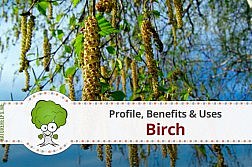Traditionally used as a spice and also as a healing herb, aniseed appears to have medicinal properties that endow it with significant health benefits.
Throughout history, people have used aniseed to treat a variety of ailments. The greenish seeds of the Pimpinella anisum were a highly-prized commodity in ancient Greece and Rome, and the seeds were so valuable in the East that they were often used to pay taxes. Today, the seeds continue to help people around the world with ailments ranging from digestive issues to low libido.
Aniseed is a plant originally from Egypt. It grows 30-60 cm in height and has roots about same lenght. Lower leaves are the largest, flat, and rounded. As the leaves go to top they reduce, and are closely stacked and small pointed.
Aniseed blossom is make of tiny white flowers which bloom from May to August, and the friut is collected from August to October. Aniseed contains a large amount of essential oils and therefore has an intense but pleasant smell, which evaporates quickly so it is recommended to keep it in small quantities.
Because of their strong and sweet taste, aniseed is often used for making cakes, breads, jams and compotes, sauces, salads, and any dish where is preferred its intense and exquisite taste. Combined with other spices its taste prevails, and is often used grined into powder.
Aniseed Health Benefits
Traditionally this herb has been used in many countries and is present because of its taste, smell and extremely positive effect on the human body.
Aniseed is used in the preparation of food, juices, teas and alcoholic beverages. Worldwide famous Turkish “raki” is made precisely from aniseed, Indian cuisine is recognizable because of flavor obtained from aniseed and curry, Macedonians use this herb to make specific brandy called “mastika” and the Greeks their national drink called “ouzo”.
Aniseed contains an essential oil which has a diuretic, antiseptic, antispasmatic, carminative and stimulant effect; fatty oils, anethole (which is recommended to avoid in case of dermatitis or any other skin irritations), aldehyde, aniseed acids, aniseed ketone and ethanol.
Healing Benefits of Aniseed
- Disinfects lining of the mouth and gum
- Softens mucus in the bronchi and facilitates expectoration
- Effective against bronchitis, asthma, influenza, cough
- Used in the sinus treatment as inhalation
- Encourages the proper functioning of the gall
- Helps with stomach pain and disorders, vomiting and nausea
- Helps with diarrhea and intestinal problems
- Helps with bloating
- Helps kidneys and urinary tract
- Used in the treatment of hepatitis and cirrhosis of the liver
- Regulates the menstrual cycle and helps against menstrual pain
- Recently used in the treatment of prostate cancer
- Has a calming effect
- Helps with insomnia
- Has stimulating effect on the nervous system
- Increases the number of leukocytes in the blood
How to Use Aniseed?
Aniseed Tea to Solve Gastro-Intestinal Problems
Pour 250 ml of boiling water over 1 tsp of anissed, cover and leave for 15 minutes, then strain. Tea should be consumed 1 cup in the morning, afternoon and evening after meals. Drink tea while still warm and in sips, not at once, and unsweetened. Aniseed tea is good for all gastro – intestinal problems and problems with the respiratory tract.
Aniseed & Milk to Relieve Cough
Like sage, aniseed is prepared with milk to relieve cough and mucus discharge. Briefly cook 1 tsp of aniseed with 250 ml of milk, no more than 7-8 minutes. Drink in the morning, afternoon and evening before meals. If preffered, 1 tbsp sage leaves or 1 tsp of sage honey can be added in milk.
Aniseed Home Remedy for Digestive Tract
You will need: 40 gr ground aniseed, 30 gr ground ginger, 30 gr ground fennel seeds, 30 gr powdered yarrow, 20 gr powdered lemon zest, 3 tbsp sage honey, 800 ml water.
Mix all herbs with honey and water in a dark glass jar and close it. Leave in a warm, dark place for 40 days. Take 1 tsp of mixture in the morning on an empty stomach.
Amazing Recipe of Aniseed Buns
You will need: 1/2 tbsp anise, 1/2 cup water, 1/3 cup sugar, 1/4 cup melted butter, 3/4 cup flour for pastry and bread 2 cups flour, 1/2 tsp of yeast, 1/2 tsp salt, 1 egg, 1 tbsp water.
Mix water and aniseed in the pot and boil the mixture. Put the pot aside, cover it and leave it to cool down until lukewarm. In water, add yeast and sugar and leave for 5 minutes. Add the flour, butter and salt and mix on a low speed until the mixture is combined.
Slowly add the flour for pastry and bread and continue to mix until a compact dough (if sticky add a little bit more flour). Put dough in an oiled bowl and leave to stand for 1 hour. Spread the dough by hands and tear it in size of golf balls , stack the balls next to each other and cover them with plastic wrap and let stand for 5 minutes.
Roll the balls to 5 cm long and 3 cm wide and wrap them in a spiral. Coat each roll with scrambled egg and leave it again for half an hour, then put in the already preheated oven (at 200 degrees C). Bake for 20-25 minutes, until the buns turn golden. Aniseed buns go well with mountain tea in the cold winter days.
How to Prepare Aniseed Tincture?
In the dark jar pour 60% medical alcohol over aniseed in a ratio of 1:5. Place the jar in dark and warm place for 10-12 days . Don’t stir the preparation, just spin the whole jar and seeds will arise from the bottom. Tincture is taken once a day for 20 drops, for cough treatment, soften mucus in the lungs and against bloating.
Contraindications in usage of aniseed
Anise is safe to use in small doses, but ingesting large amounts of the seed can cause convulsions, narcosis, circulatory problems and coma. Improper use may also cause seizures, paralysis, lack of clarity and other mental problems. Users should only take the seed as directed and avoid consuming high doses.
Aniseed is not recommended during pregnancy!




